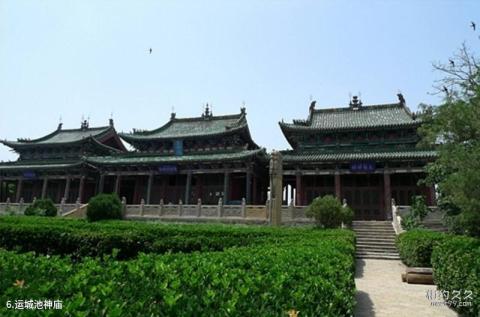
Introduction to the Yuncheng Pool Temple: The Pool Temple is located on Woyungang on the north bank of the Yanchi in Yuncheng. The temple faces north and south, with mountains on its back and water on its back. The temple was formerly the Lingqing Temple built when Emperor Li Yu of the Tang Dynasty conferred the title of Duke Lingqing on the God of the Salt Pond. Emperor Dezong of the Tang Dynasty, Li Shi, once visited the Salt Pond to offer sacrifices. There are also Eastern and Western Pond Gods. Zhao Ji, Emperor Huizong of the Song Dynasty, designated the God of the East Pond as Zibao Gong and the God of the West Pond. The god was Huikang Gong, and later he was promoted to king. Kublai Khan, the emperor of the Yuan Dynasty, gave the temple the name Hongji, and Emperor Chengzong of the Yuan Dynasty, Tiemu'er, added the god name Guangji Yongze. In the early years of Hongwu in the Ming Dynasty, he was called the god of salt ponds. The temple was rebuilt in the fourth year (1535). The main building complex at that time included the mountain gate and the main hall in the front, three stages, east and west auxiliary halls and suites in the middle, and three main halls in the back, all with double eaves and nine roofs. It has a mountain-style roof with carved beams and painted pillars, which is exquisite and spectacular.
Today's temple is composed of three main halls, the Salt Culture Museum, Haiguang Tower, Gexun Tower, and Han and Tang salt mining factories. It has a total area of 26,000 square meters. It is spectacular in scale, rigorous in structure, bright in layout, and magnificent in architecture. , allowing tourists to appreciate the beautiful scenery of Yuncheng Salt Lake while appreciating the profoundness of salt culture and Yellow River culture, and feel the vicissitudes of the Chinese nation.
